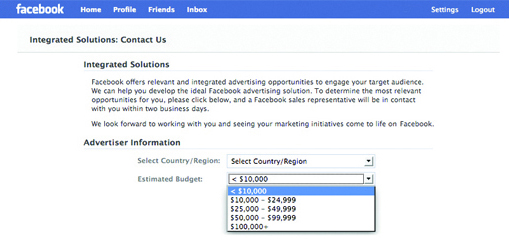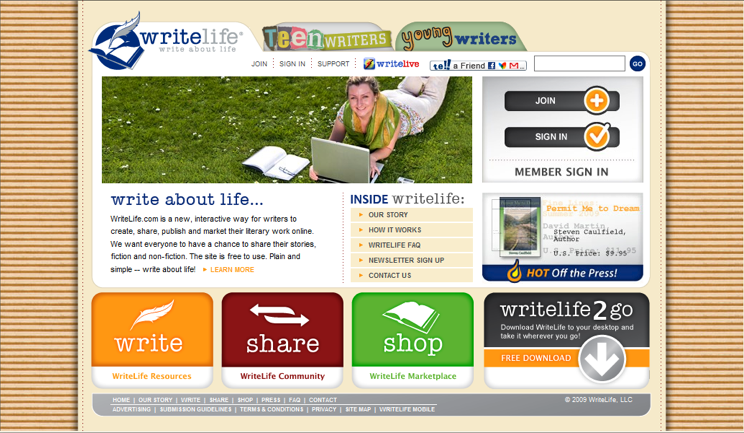April 28th, 2010
Behavioral Targeting Reduces Waste
Here’s a shocker:
Advertising costs money. Sometimes it costs a lot of money. So when you and your company pay to market and advertise, you want results. You need results. You deserve results. Well today, with all the advances in technology, it’s getting easier and easier to increase your return on marketing investment.
Just look at digital and online media. These two elements alone have changed the underlying media ecosystem and the nature of the audience and exposure promise. Online advertising creates different kinds of exposure opportunities and provides new metrics that are more accountable. Rather than offering statistical estimates of audience exposure to advertising messages, precise individual level-data can be tracked with click-throughs, downloads, cookies and other techniques.
Another way advertising can be more effective is if it’s highly targeted – eliminating waste from advertising to people who won’t purchase your product or service. Well how do we do that? One of the fastest growing methods of targeting is online behavioral advertising. And compared to direct mail targeting, online behavioral advertising is cheaper, easier and more effective.
Here’s how it works:
If “Joe Consumer” has been looking at reviews for ebooks and browsing at various ecommerce sites, it’s pretty likely he’s in the market to buy. So if he sees an ad for the Kindle while reading a weather story on CNN.com, he’s much more likely to click.
He is also more likely to view the advertising as an information service, rather than disruptive nuisance. That’s the premise behind behavioral targeting.
Companies like Google, Yahoo and AOL have invested billions in technologies to automatically analyze Web audiences and sell relevant ads. But all of this highly effective targeting is causing a heated debate over potential online privacy issues. Because in addition to monitoring page visits and purchase data, we can now track a vast amount of personal data consumers leave in their online wake, as well as analyze what people say about brands and products on message boards, social networks, blogs and Twitter.

In July of 2009, hoping to avoid formal regulatory action by the Federal Trade Commission, a group of advertising industry associations published a set of voluntary
self-regulatory principles addressing online behavioral advertising:
- Transparency and Consumer Control : Websites have to tell customers what type of data they are collecting and how it will be used. They also have to give users the choice of opting out.
- Data Security: Companies can only retain user data as long as it fulfills a legitimate business purpose and must prevent information from falling into unauthorized hands.
- Consent for Policy Changes: If a company decides to change the way it uses previously collected user data, it must notify users in advance.
- Consent for Sensitive Data: Companies must obtain prior consent from users before collecting sensitive personal information.
Online Advertising Targeting Options:
- Geographic/Demographic Targeting is the most straightforward and most widely understood, and is often referred to as general display advertising.
- Contextual Targeting matches ads to the content of the page that a consumer is currently viewing. A consumer who visits a sports site may see advertisements for golf clubs or baseball tickets on that site. Google AdWords are also a good example.
- Behavioral Targeting matches ads to a consumer’s interests by compiling detailed information about their online activities.
The regulatory principles do not apply to general display advertising or contextual advertising, only to targeted advertising based on user behaviors/activities across various websites.
The bottom line is your bottom line. More information on a consumer leads to a more concentrated target audience, in turn, giving you a more efficient marketing push. But it might also mean infringing on someone’s privacy. So where do we draw the line? It’s an issue that will see the light in the coming years. Stay tuned.
March 19th, 2010
Turning Data into Action
Getting the most from Web analytics.
So what? That’s exactly what to ask when you’re presented with a mountain of seemingly relevant and interesting data about your website. The next question should be:
Why? If you’re not asking those questions, it’s possible that you are stuck in information overload. It’s so easy to get a never-ending stream of information for the who, what and when about your site that many site owners never know what to do with it. That’s the goal of web analytics – gathering information in order to understand it and then take action.
The Web Analytics Association defines Web Analytics as:
- “ The measurement, collection, analysis and reporting of Internet data for the purposes of understanding and optimizing Web usage.”
Looking closer at each part of the definition makes it easier to understand. First there’s measurement and collection, then analysis and finally doing something with what we’ve learned.
Modern Web servers and free online tools make collecting and measuring data very easy. Virtually every Web hosting account will provide reports generated by the server about the most popular pages on your website, visiting search engines and a lot more. Tools like Google Analytics provide a similar set of data, but they do it by “watching” what pages get visited on your website after you install a special set of code that allows them to do so. Both methods provide a large amount of interesting information. But they both have certain drawbacks to be aware of. Most Web analysts pay attention to both in order to get the most comprehensive view of what’s happening on a site.
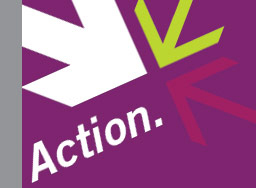 Since websites are live at all times, the data keeps coming in continuously. Reporting and interpretation of the information is typically broken down into meaningful segments for analysis purposes. Weeks, months, quarters, seasons, promotional periods, days, nights and virtually any other meaningful segmentation you can think of are valid options for analysis. The key factor is to understand what your business goal is when looking at the information.
Since websites are live at all times, the data keeps coming in continuously. Reporting and interpretation of the information is typically broken down into meaningful segments for analysis purposes. Weeks, months, quarters, seasons, promotional periods, days, nights and virtually any other meaningful segmentation you can think of are valid options for analysis. The key factor is to understand what your business goal is when looking at the information.
If you are interested in the activities of foreign visitors, then looking at domestic traffic becomes irrelevant. Visitors who purchased can be reviewed differently than those who didn’t. Analyzing the right data for the right question is essential. To gain the right insights, you have to combine the right pieces of information.
Once you have the reports and related information, the true process of analysis begins.
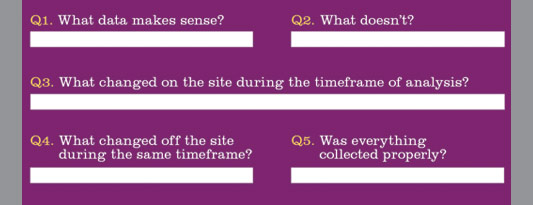
There are countless factors to consider. Experience in understanding what to look at is where the value of a Web analyst makes a difference.
The next step is to determine what can be done to optimize the site or visitor experience in order to meet your business goal. Perhaps you want people to sign up for your email newsletter. There are typically many things that can be done that will have an impact on user behavior. Web analytics teaches us to take what we know and test what we think is a good course of action.
- Will a larger button make more people click?
- Should the form say, “Free email newsletter?”
- Are you requiring too much information from the subscriber?
By setting up tests, it’s possible to find out exactly what makes an impact. You’re then able to collect data on what happens after you make changes, analyze it and make further decisions based on the new information.
That’s what Web analytics comes down to – a methodology for transforming observation and data into action. It’s a relatively young discipline and maturing every day. Knowing the difference between reporting, analysis and how to take action is the most important part of the equation. Without doing something with the data collected, it’s just a bunch of numbers that look pretty, but are worthless to your bottom line.
March 19th, 2010
The Changing Face of… Well, Facebook
June 13th. A day that will live in social media infamy. It’s the day Facebook announced they would allow vanity URLs to fan pages. It’s also the same day tens of thousands of companies flocked to the world’s number one social media site. From Fortune 500 companies to mom-and-pop shops, Facebook is being used in an infinite amount of ways to promote businesses. From holding contests, distributing coupons, crowdsourcing ideas and keeping in touch with “fans”, Facebook has become one of the biggest growing tools for marketers.
But when marketers take hold of a new medium like Facebook, they also have to be ready to roll with any changes within that medium. This might even mean completely rethinking their social media strategy.
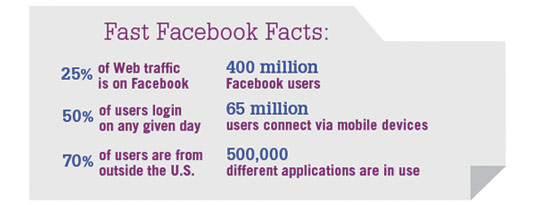
In fact, just recently, Facebook has released a number of game-changing revisions and upgrades to their site. While Twitter and the blogosphere are all buzzing with the new Facebook privacy policies, we thought we’d share another recent change that might have a larger impact on businesses.
Now, any business seeking to hold a competition, sweepstakes, contest or promotion on Facebook must have written permission from Facebook:
Section 3. Administering a Promotion through the Facebook Platform
You may not administer any promotion through Facebook, except that you may administer a promotion through the Facebook Platform with our prior written approval. Such written approval may be obtained only through an account representative at Facebook.
Let us help break-down the fine print:
In order to receive written permission, you need to work with a Facebook account rep.
To contact a rep, you have to fill out the Facebook Contact Us form. The form asks for your estimated budget with the lowest amount available being <$10,000. (Translation, Facebook is looking for some serious cash from companies who want to hold contests.)
Facebook is quickly getting the face of Cash Cow. And that’s an ugly face for companies seeking to rapidly grow their Facebook groups or fans with giveaways. One area that Facebook’s new promotion guidelines didn’t cover is third-party services such as applications and tools using the Facebook API. Look for big growth in those areas in 2010.
So if you are thinking about holding a contest on a social networking site, might we suggest another powerful social media tool that is still free, Twitter.
March 19th, 2010
WriteLife
According to the New York Times, 80% of people worldwide believe they have a book inside of them. From fiction to philosophy, WriteLife allows people to share their story. Traditionally, there are two main ways to get a book published:
TRADITIONAL PUBLISHING: In traditional publishing, the writer only keeps up to 15% of the profits, while the rest goes to the publisher and agents.
SELF-PUBLISHING: In self-publishing, the author fronts all the costs but reaps all the profits.
WriteLife, LLC is turning the old publishing model on its head.
They’re pioneering an entirely new approach: COLLABORATIVE PUBLISHING
Offering anyone and everyone the opportunity to write, publish, share and sell their literary works. And unlike traditional publishers, they agree to pay authors’ royalties equivalent to 50% of all net profits received from the sale of their content.
What’s more, they pay for pre-production and production costs of editing a manuscript, creating a book and placing it in distribution channels such as Amazon and Barnes & Noble.
WriteLife’s approach to publishing was something completely unique, and Bozell was incredibly excited to work with them.
Here’s what we did:
Category Name
Bozell’s task was to make authors aware that there
are more options for publishing and only one
(that we’re aware of) can earn authors 50% of profits from books sold. Since WriteLife works directly with the author, provides professional editors at no cost and holds the authors hand throughout the entire process – we came up with the category name of Collaborative Publishing.
Online Advertising Campaign
 Our next goal was to develop an online advertising campaign from September 2009 to December 2009 that would increase traffic to WriteLife.com — in turn leading to increased manuscript submissions and WriteLife name recognition.
The campaign centered around two online audiences; Professional Writers and General Interest.
Our next goal was to develop an online advertising campaign from September 2009 to December 2009 that would increase traffic to WriteLife.com — in turn leading to increased manuscript submissions and WriteLife name recognition.
The campaign centered around two online audiences; Professional Writers and General Interest.
Our goal was to reach consumers in truly relevant environments, where they will be receptive to WriteLife messaging. Through our strategic and media research, we picked a list of websites that effectively connected WriteLife to their target audience:
• PublishersWeekly.com
• WritersDigest.com
• WriterMag.com
• PW.org (Poets & Writers)
• MediaBistro.com
• BarnesandNoble.com
Creative Strategy and Messaging
Target Audience: Professional Writers
WriteLife benefits this audience by getting them published, in turn building their resume for freelance writing jobs or for applying
for college instructor jobs.
Target Audience: General Interest Writers
This group has a story to tell, and WriteLife helps them get it to potential readers – helping them with publishing costs and ISBN issuing, allowing for the writer’s book to be found online.
RESULTS:
For 12 months prior to the September, 2009 online advertising campaign launch, the WriteLife.com site traffic averaged 4,821 visits/month and received 4 manuscripts/month.In the first two months of the campaign, WriteLife.com received 27,442 visitors to the website, 24 new manuscripts were submitted and over 180 new users registered.
The success of WriteLife is due to product demand in the marketplace, strategic online media planning and placement, and strong creative messaging. WriteLife has also noticed the enhanced quality of manuscripts being submitted since the launch of the advertising campaign.
WriteLife, LLC has also launched WriteLive.com, an interactive way for writers to instantly share their thoughts and passions — offering the opportunity to write and share work immediately and organically.
March 19th, 2010
Consumers are Driving Efficiency
BUCKLE UP.
Whether the recession is behind us or is still hanging on is up for debate. The financial uncertainty that began for most companies in the latter part of 2008 made “doing more with less” the mantra of most marketers in 2009. The silver lining in the recent economic downturn is that it forced many companies to create measurement systems to flush waste out of their marketing models.
The bad news is, much of the spending scrutiny arising from the recent recession continues to focus on the tactics of how and where to advertise. A million and one articles have been written about the evolution from traditional to digital advertising, but whether you are talking about a print ad versus an online banner ad, a Yellow Page ad versus a Google search result or a direct mail piece versus an email message, it is advertising. And advertising is priced based on maximizing reach. Proper targeting techniques can greatly reduce waste, but there will always be advertising impressions that fall on eyes and ears that do not respond to the message, no matter what the frequency.
In addition to some level of built-in inefficiency, the classic “interruption model” in which advertising is the price the consumer must pay to view desired content will continue to erode for several reasons:
a
The consumer has too much control over their media environment for marketers to continue to push unwanted advertising — thereby increasing waste.
b
Low-cost digital distribution has made it easy for consumers to generate vast amounts of free content, as well as for several paid content models to emerge (neither are supported by advertising).
c
It is estimated that the average individual in the United States receives almost 7,000 marketing messages a day, or simply too much information for anyone to pay attention to, adding more waste to the advertising model.
Consumers have spoken. They will be receptive to marketing messages personalized to reflect what they have searched for, watched, read, purchased, experienced or shared and they want information contextualized – meaning where they choose to receive information must dictate its content and format. Even searching the Web is getting to be a chore for many consumers. They want tracking and alerting based on their preferences.
Most marketers have figured out the incredible value that participatory marketing (earned media via consumer-to-consumer communications) and two-way real-time communications with consumers can bring to their brand. The greater adjustment for models built on a heavy advertising budget is the trade-off from attempting to reach every conceivable person in a potential market, to creating deeper engagement with a smaller set of consumers and targeting only their most receptive prospects.
The successful marketing model in this transition will both incorporate paid advertising (created in a way that is less perceived as advertising and more perceived as welcome content by the consumer) and creating internal staffing and structures to support earned media.
The good news is, this approach will further drive unnecessary costs from marketing expenditures.

December 31st, 2009
The Good, The Bad & The Ugly of SEO via SMO
For years, search engine optimization has been a vitally important part of online marketing. After all, if potential customers can’t find your company, they will never become customers. So with more than a trillion unique URLs available today, how do you best optimize your online presence with search engines?
The traditional and still the best method for creating strong search engine results is by creating valuable content for your target audience on your official website. If the quality of your content is high, they will be glad to share your content. This, of course, can be a very long and tedious process, in that search engine optimization never really stops. As search algorithms and your competitors change, so must your efforts.
A popular tactic is to leverage social networking services such as Facebook, Twitter and YouTube just to name a few. There are literally thousands of sites that offer distinct services that could be leveraged.

It is important to select the correct sites based on your objectives and target audience. If you are selling a physical product then Facebook may make sense to create brand loyalty. If your organization specializes in thought leadership then a service like SlideShare would make sense since you can post your presentations.
 However, it’s important to understand that using social media services to create search results isn’t all a bed of digital roses. A search engine’s goal is to present the most relevant results for their users. They ultimately want their algorithms to think as a human would when determining results. If you are posting the same content on multiple social services for the simple goal of showing up under a large number of keywords, you have to ask yourself if those are truly relevant results for a user. Search engines like Google continually change to compensate for these types of techniques.
However, it’s important to understand that using social media services to create search results isn’t all a bed of digital roses. A search engine’s goal is to present the most relevant results for their users. They ultimately want their algorithms to think as a human would when determining results. If you are posting the same content on multiple social services for the simple goal of showing up under a large number of keywords, you have to ask yourself if those are truly relevant results for a user. Search engines like Google continually change to compensate for these types of techniques.
This means that the tactics you may use today to improve your search engine optimization may not work tomorrow. Unlike the traditional tactics of creating strong content on your primary website the risks of leveraging social media services are much higher. If search engines change their systems, your social media-inspired search engine results may simply disappear.
According to a Phoenix SEO office, on top of this, if a user sees a large number of results for a certain company, each coming from a different social media service, this can be viewed as keyword spam. While you may appear on the search results pages this can create a negative impression if it appears too aggressive. If you were to search for pizza in your location, would you want to only see listings for a single establishment?
 With all of the potential pitfalls, when done properly, using social media websites for search engine optimization can be a very powerful tool. Just remember to create consistent and engaging content that readers will share. Use social media to interact in a real way with your customers. Social media avenues are not simply extensions of your corporate presence but rather independent marketing efforts and channels that should be treated with care and focused attention.
With all of the potential pitfalls, when done properly, using social media websites for search engine optimization can be a very powerful tool. Just remember to create consistent and engaging content that readers will share. Use social media to interact in a real way with your customers. Social media avenues are not simply extensions of your corporate presence but rather independent marketing efforts and channels that should be treated with care and focused attention.
December 31st, 2009
The Evolution of Media
Unless you’ve been living in a bomb shelter for the last 10 years, you know that the way people are consuming media now is completely different than it was 5 or 10 years ago. Consumers can now select the content and media channels they most prefer using devices across numerous technology platforms day or night. Face it, we rely heavily on technology in order to do most of our daily activities.
The Web is becoming the real-time information center for all interaction and behavior. We have seen a massive audience shift from prime-time to anytime. Gone are the days of media companies producing all content, where the audience simply sits back and takes it all in. Both magazines and newspapers are caught in a catch-22 of driving their audience away from traditional formats while hoping that Web revenues will grow fast enough to make up for losses they’re experiencing in print.
 “THE CONCEPT OF AN ‘AVERAGE AMERICAN’ IS GONE, PROBABLY FOREVER,” demographics expert Peter Francese writes in 2010 America, a new Ad Age white paper. There is no such thing as the “American consumer.” The most prevalent type of household today is a married couple with no kids, followed closely by single person households. Also, in the two largest states (California and Texas), as well as New Mexico and Hawaii, the nation’s traditional majority group – white non-Hispanics – is in the minority. More of Francese’s 32-page report is available here.
“THE CONCEPT OF AN ‘AVERAGE AMERICAN’ IS GONE, PROBABLY FOREVER,” demographics expert Peter Francese writes in 2010 America, a new Ad Age white paper. There is no such thing as the “American consumer.” The most prevalent type of household today is a married couple with no kids, followed closely by single person households. Also, in the two largest states (California and Texas), as well as New Mexico and Hawaii, the nation’s traditional majority group – white non-Hispanics – is in the minority. More of Francese’s 32-page report is available here.Men are more likely than women to say that the internet has replaced their need to read printed newspapers and magazines, and also are more likely to be willing to pay for a subscription to an online newspaper or for a service to watch online TV with limited ads. According to a study by TargetCast tcm, consumers ages 35+ still consider newspaper ads to be more influential in determining their purchase decisions, but the study also reveals that newspapers need to change in order to stay relevant.
Today, everyone produces content and shares with each other. Consumers are now actively engaged in conversations between each other allowing for information to spread easily. Nowadays, it is all to simple to get your message out to the masses with technology like podcasting, blogs, social networking sites, online video sites, etc. Consumers are accessing media faster than ever and populating new content as we speak.
ONLINE VIDEO: THE POWER OF SITES LIKE YOUTUBE & HULU
- Online videos make up 1/3 of all consumer internet traffic
- Hulu runs about 4 ads per hour vs. 32 per TV hour
- 94% would prefer to view ads than pay a fee to watch online video content
- Average consumer recall of an un-skippable ad online is 50%, versus 18% for an ad on TV
(Magid Assoc, 2008)
Also, the age of engage is getting younger. Sites like KidZui, Noggin and WebKinz have already captured many youngsters ranging in age from 3-12 years. By 2010, Millennials/Gen Y-ers will outnumber Baby Boomers. We have already seen the enormous power that Gen Y-ers hold from the last Presidential election. Fifty-percent of retailers last year redesigned their sites to be more creative and technically advanced for the Gen Y consumer. Gen Y-ers also get bored fast so retailers employed faster streams for their product pages. According to the Nielsen Company’s “How Teens Use Media” report, the notion that teens are too busy texting and Twittering to be engaged with traditional media is exciting, but false. Instead of replacing traditional media with new media consumption, teens are simply making time for both.
Also, marketers are becoming stealth in their tactics to hit consumers without them even realizing it. Product placement is a great example of this and one of the best is Coca-Cola on the hit show American Idol. Another example is product placement in HBO’s Entourage: from TaylorMade to Visa to the Los Angeles Lakers to Vince’s birthday party sponsored by Victoria Secret. Some brands shown were more discrete like a Smuckers jar on the breakfast table, but if you can integrate a product into a storyline successfully, it is a thing of beauty.
Some things never change: Traditional mediums are preferred sources for news. Television is the biggest news source ahead of daily newspaper, radio and internet. Consumers see TV as the most credible source of information. Young adults, not surprisingly favored the Web more than older boomers.
THE FUTURE OF TV: SLOWLY BUT SURELY
Addressable Advertising
Addressable TV is a zone-based platform that allows advertisers to identify and target specific households based on demographic and geographic information. Marketers will essentially be able to route specific ads to specific households — an ad promoting diapers to families with infants, for instance.
Interactive TV Ads
TV viewers will be able to press buttons on their remote to see more information about selected ads, and to order samples of things like shampoo or cereal.
- The amount of time spent watching TV at home increased by 2 hours and 2 minutes per month in the second quarter of 2009 up to 4.7 hours per day.
- Time spent watching video skyrocketed by 45.5% averaging 3 hours and 11 minutes per person.
- The number of people watching video on smart phones is up by 70% in the past 12 months, to fifteen million.
(Source: Nielsen Three Screen Report 2009)
Bottom line, consumers are tired of hard-hitting messages that don’t apply to them and demand more personalized content. As marketers, we must keep a watchful eye on marketing and social trends to learn how consumers are evolving and embracing media along the way. It’s all about the experience and relevance. If you can provide a consumer with a relevant and meaningful experience, chances are they will convert to a buyer and more importantly spread the word.
December 31st, 2009
Changing and Challenging Nature of Fundraising
The recession has taken its toll. In many ways. On all of us.
But one sector has been hit with a double whammy: non-profits. They’re faced with increased demand and decreased funding, all on top of a systemic change in the nature of fundraising. Hundreds of thousands of non-profits are now in competition for funds. In some communities, as many as five major organizations may be conducting campaigns at the same time. But is one cause more important than another? Absolutely not.
 60% of all U.S. philanthropy comes from high net worth individuals (with liquid assets of $1 million or more), which represents 3% of the population. And that percent is shrinking, FAST. As a result, non-profits are grasping for ways to replace the donors (and $) that are disappearing.
60% of all U.S. philanthropy comes from high net worth individuals (with liquid assets of $1 million or more), which represents 3% of the population. And that percent is shrinking, FAST. As a result, non-profits are grasping for ways to replace the donors (and $) that are disappearing.
Of course, there’s the next generation of key donors. There’s been a great deal of publicity about the transfer of generational wealth, but as many non-profits are finding out, that doesn’t automatically mean inheritors become donors. The same old strategies don’t necessarily work. New approaches must include fresh thinking and a substantial effort to build and nurture prospects. And it all starts with an understanding of who the new prospects are and how to reach out to them.
ONLINE GIVING
Online giving is quickly becoming the growth engine for non-profits. And for good reason. Using the latest technology, non-profits are able to reach out to wider audiences and solicit smaller donations. Want proof that it works? Just look at the Obama Presidential Campaign. It proved that lots of small donations could add up to big money and could mobilize action. Technology advancements now enable non-profits to efficiently and effectively reach donors they’ve not been able to connect with before. Online giving continues to grow and now accounts for 5% of total giving, 16% of new donors and 27% of new revenue.
MOBILE GIVING
In mid-2008, the Mobile Giving Foundation (mobilegiving.org) was formed to open the mobile donation process to a wide range of qualified 501(c)3 non-profits. Through deals with the major cell phone carriers, a $5 or $10 donation is added to a phone bill when someone pledges by using a special code via an SMS (text) message. The money is collected by the carriers then passed on to the non-profit.
It’s simple. And mobile phones are the primary communication device among younger audiences. Mobile giving has rapidly taken off. It’s growing faster than online giving and more and more non-profits are adding a mobile giving option. It’s anticipated that over $2 million will be raised via mobile donations in 2009.
Despite the economic landsca pe, the compassion of our society remains steadfast. It’s our charitable spirit that makes America so unique. We understand what it means to help a neighbor. We understand what it means to give someone hope. We understand what it means to make our community a better place. So even though the way we donate might be changing, we’re still as compassionate as ever and willing to help others. It’s what makes us unique. It’s what makes us America.
pe, the compassion of our society remains steadfast. It’s our charitable spirit that makes America so unique. We understand what it means to help a neighbor. We understand what it means to give someone hope. We understand what it means to make our community a better place. So even though the way we donate might be changing, we’re still as compassionate as ever and willing to help others. It’s what makes us unique. It’s what makes us America.
ECONOMIC UNCERTAINTY has proven to be one of the chief enemies of philanthropy. Charitable giving fell in 2008 by the largest percentage in five decades. Among organizations working to meet people’s basic needs (food, shelter, clothing, etc.), over half (53%) said they are underfunded or severely underfunded in 2009.
THE NEW PHILANTHROPISTS:
Children of the Baby Boomers
Gen X (born ’65 – ’77) is the first generation to be online nearly all their lives.
&
Gen Y (born ’77 – ’94) is the first to have unlimited access to wireless/mobile technology.They are donors who have very different characteristics and often different interests than their parents. They’re young, diverse, multicultural, intolerant of bureaucracy and committed to individuals. They embrace technology. They have looser ties to “elite philanthropy” and status than past generations; they make decisions based on knowledge and research, and are risk takers. They seek to change the world.
December 31st, 2009
The Power of “You”
When it comes to marketing, most health care organizations tend to talk mostly about themselves.
“WE have the latest and greatest technology.”
“WE have the best doctors and nurses.”
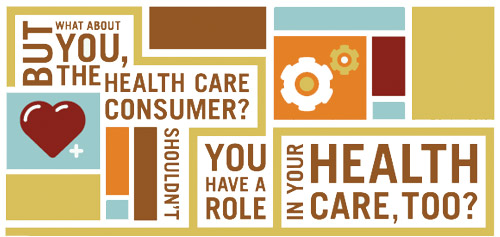
The consumer is exactly what Alegent Health has built their entire approach to heath care around. As the largest health care system in Nebraska and southwestern Iowa, their approach has not only stayed true to their mission as a faith-based organization to always put patients first, but it also helps differentiate them from their two largest competitors.
However, health care isn’t just a low-interest category. It’s a no-interest category.
So how do you convince consumers that you really do everything you do for them, when they don’t really want to think about you in the first place?
You let THEM tell the story. And you let them do it in a way that is true to who they are, and that compels other consumers to want to hear their story, too.
Alegent Health put some of their patients in front of a camera and let them tell their stories. These patients talked about their diagnosis and treatment, but most importantly, they talked about the things that were important to them in their lives, and how Alegent Health helped them get back to those things.
FOR GINA, IT WAS TUMBLING.

A car accident left her paralyzed from the waist down. One of the first things that the Alegent Health rehabilitation team asked her was what kinds of things she wanted to be able to do. Tumbling was the number one thing on her list. The rehab team didn’t stop until she was back to coaching tumbling and doing forward rolls herself.
FOR JOE, IT WAS HIS WIFE.

Alegent Health’s immediate diagnosis and treatment had Joe and wife, Mary Lou, attending an Irish Tenor’s concert just days after he had a heart attack. His recovery also meant he was able to celebrate his 50th wedding anniversary with Mary Lou and their family.
FOR JOYCE, IT WAS HER FAMILY AND HER FAITH.

Through her treatment for Stage 3 breast cancer at Alegent Health, her nurse navigator not only helped her find ways to address her son’s fears about what she was going through; but also connected her to the Patient Advisory Committee – a place where she feels she’s using her faith and talents by helping others facing her same situation.
Patient testimonials aren’t a new concept; but the way Alegent Health is using them is. Three thirty-second television spots capture a small, but compelling piece of each patients’ story, driving viewers to see the complete story at Alegent.com/stories. On the site, consumers can share their own personal health care stories, view additional featured stories, and link to related information from Alegent Health. This allows consumers to experience the Alegent Health brand, even if they don’t currently need health care.
The campaign is also supported through online video and banner ads; radio and print ads; and materials distributed through the various Alegent Health sites of service. The patient stories have been promoted via Facebook and Twitter and are available on YouTube.
In the first 9 weeks of the campaign, the videos have been viewed 6,700 times at Alegent.com/stories, 5,200 times on YouTube and have had over 11,000 unique page views.
December 31st, 2009
Consumer Purchase Decisions
Why do customers do what they do? What goes through someone’s mind when they’re thinking about a purchase? Why do people choose one product over another? These are all good questions. Customer and potential customer behavior is not an exact science. But we do know quite a bit about what makes them tick. And we certainly know the process they go through before they actually buy a product.
Consumer purchase decisions have changed drastically over the last 10 years. With communication and information literally flowing at the speed of light, consumers can get product information anytime, anywhere. And they can get a lot of it in a matter of minutes. Yes, it’s a cliché way to put it, but when it comes to consumer purchase decision-making – the internet changed everything.
TRADITIONAL MODEL OF CONSUMER BEHAVIOR
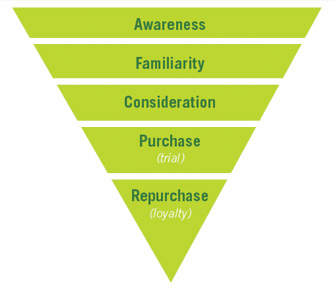 The traditional model of consumer purchase behavior is represented by a funnel shape, with the largest population of potential purchase options signified by the top, or widest part, of the funnel with the field of choices narrowing as the consumer goes through a linear decision-making process.
The traditional model of consumer purchase behavior is represented by a funnel shape, with the largest population of potential purchase options signified by the top, or widest part, of the funnel with the field of choices narrowing as the consumer goes through a linear decision-making process.
Under this pattern, marketers have long attempted to reach the consumer to impact the awareness and familiarity stages of this funnel, using advertising and other media placement to convince the consumer to include their brand in a “considered set” when a purchase requirement is triggered and following with package design, promotion, store/service environment and point-of-sale messaging as a final push tactic once the consumer has narrowed the field to a few choices.
FLAW #1: While creative advertising will still get noticed by an interested consumer, the explosion of products, services and media outlets in the past 25 years has created a clutter of messaging that the human mind just can’t process. It is estimated in this time period that the average number of marketing messages a consumer receives daily has almost doubled – to almost 7,000 per day.
FLAW #2: In addition to the assumption that the consumer can be receptive to all of the ongoing exposure, the funnel model also treats the consumer as passive until the consideration stage, by which time the belief has been that they have already eliminated a large number of purchase options.
FLAW #3: After the initial connection between a brand promise and brand experience (trial purchase) some also consider “the funnel” to imply that the population of brands from which a consumer creates a longer-term commitment (repurchase) to be limited to those brands residing in their original considered set, again treating the consumer as way too passive.
HELLO NEW MODEL
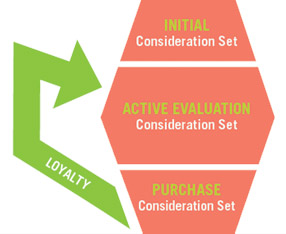 A new study by McKinsey & Co., the first quantified analysis that we have seen to challenge the funnel model, finds that increasingly informed and empowered consumers:
A new study by McKinsey & Co., the first quantified analysis that we have seen to challenge the funnel model, finds that increasingly informed and empowered consumers:
- Begin with a much narrower list of purchase options and perceptions, based on what they have stored in their brains for later recall.
- Expand their consideration set considerably during a phase of active evaluation, paying attention to relevant advertising, shopping, researching reviews and opinions on the Internet and seeking out recommendations or related experience from friends and family.
- Are not as methodical as previously thought and often enter a store or purchase environment with a much larger list of possible options than the funnel model represents.
- Often aren’t as loyal as marketers want to believe, actively considering options during a post-purchase experience and becoming much more receptive to ongoing competitive exposure.
WHAT DO THESE FINDINGS MEAN TO MARKETERS?
- First, company-driven messaging through advertising must be targeted. More is not always better. You must understand the purchase decision process of your potential consumer and reach them with relevancy while they are in the stage of active evaluation.
- Your brand or company must have a high-quality, informative and interactive website and you must engage in social media, developing ways for consumers to learn about you, talk to you and talk about you. Work with independent sites that follow your brand and monitor what is being said about your brand.
- Next, you must spend more time creating a positive delivery point – whether it is your store, a retailer that carries your product, a service outlet, your office, your presentation when calling on clients … even those environments such as a warehouse or a bill paying desk … EVERY customer touch point can and will be evaluated by the consumer.
- Finally, find ways to reward and promote loyalty. Affinity programs and frequent customer rewards keep your customers from wandering after initial customer capture.
Now companies have two choices. They can sit back and live in the old model of customer behavior and continue to throw their marketing dollars in the toilet. Or, embrace the changes of the last decade and design a marketing program that’s more targeted and efficient – leading to better customer loyalty and a greater ROI. Which sounds better for your company? GOOD CHOICE.



